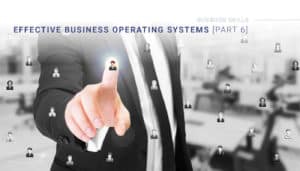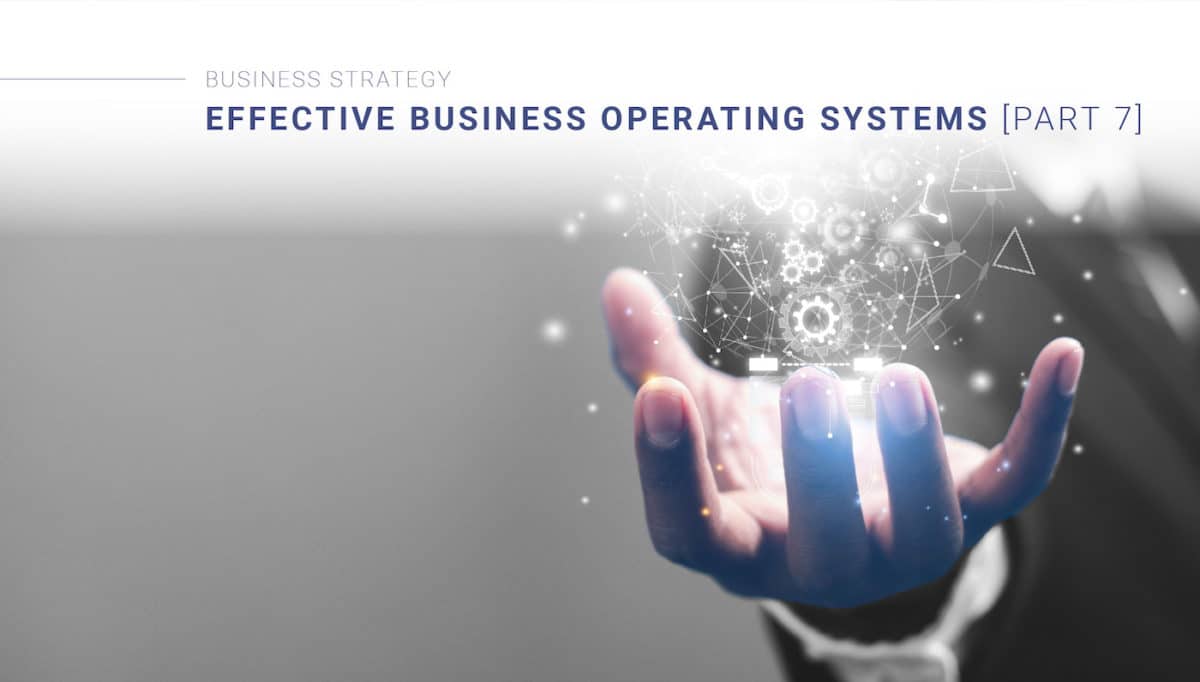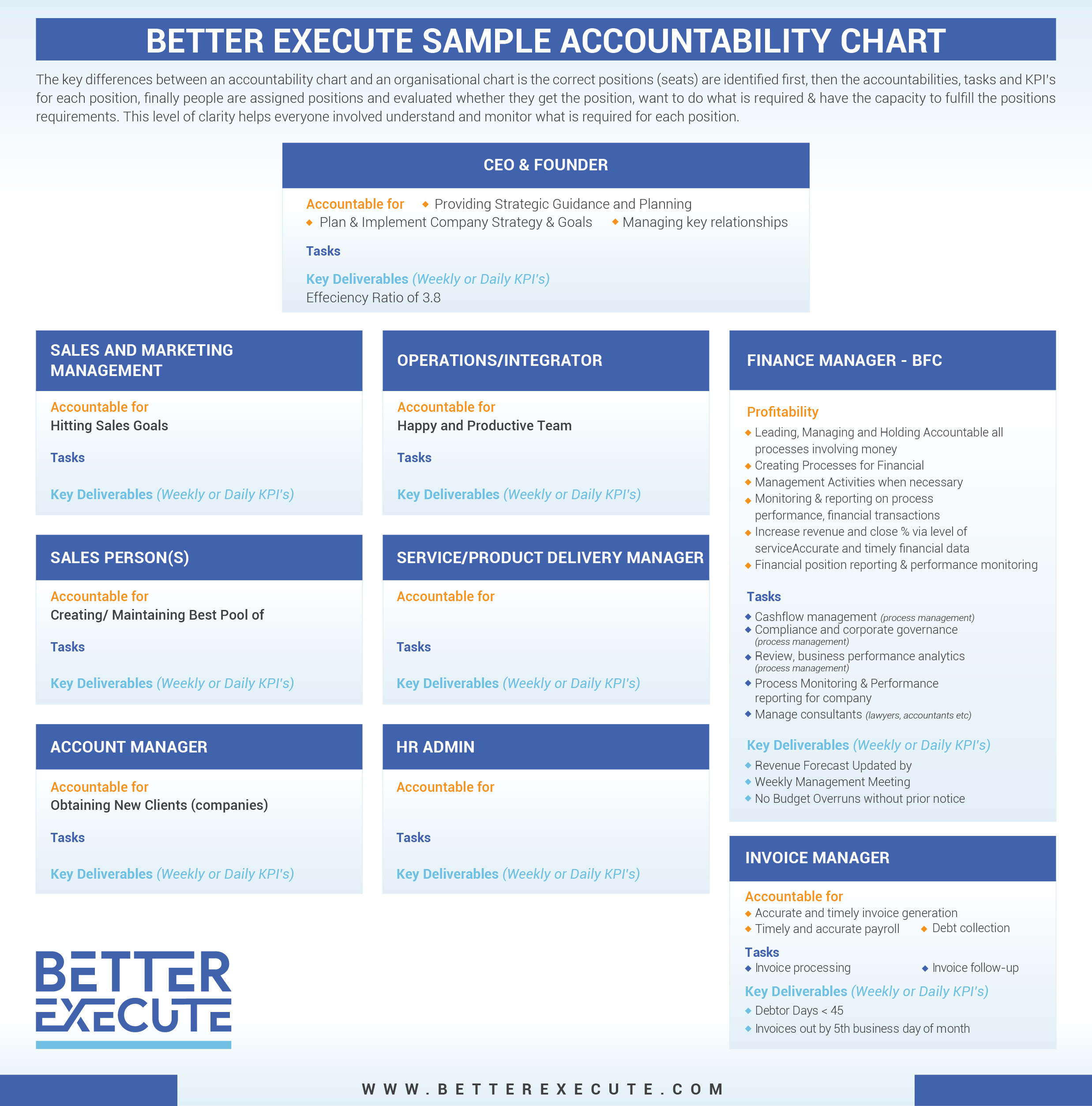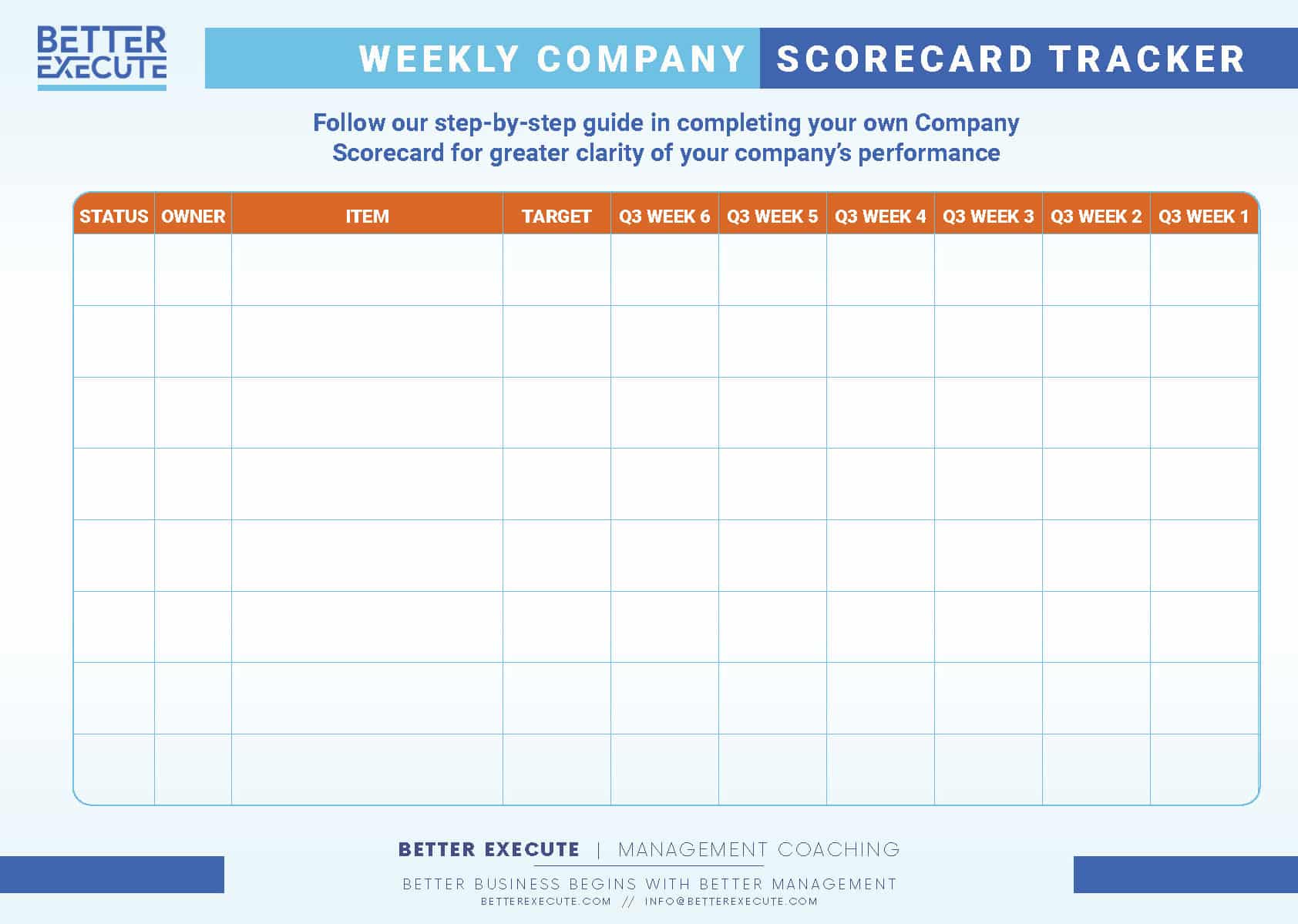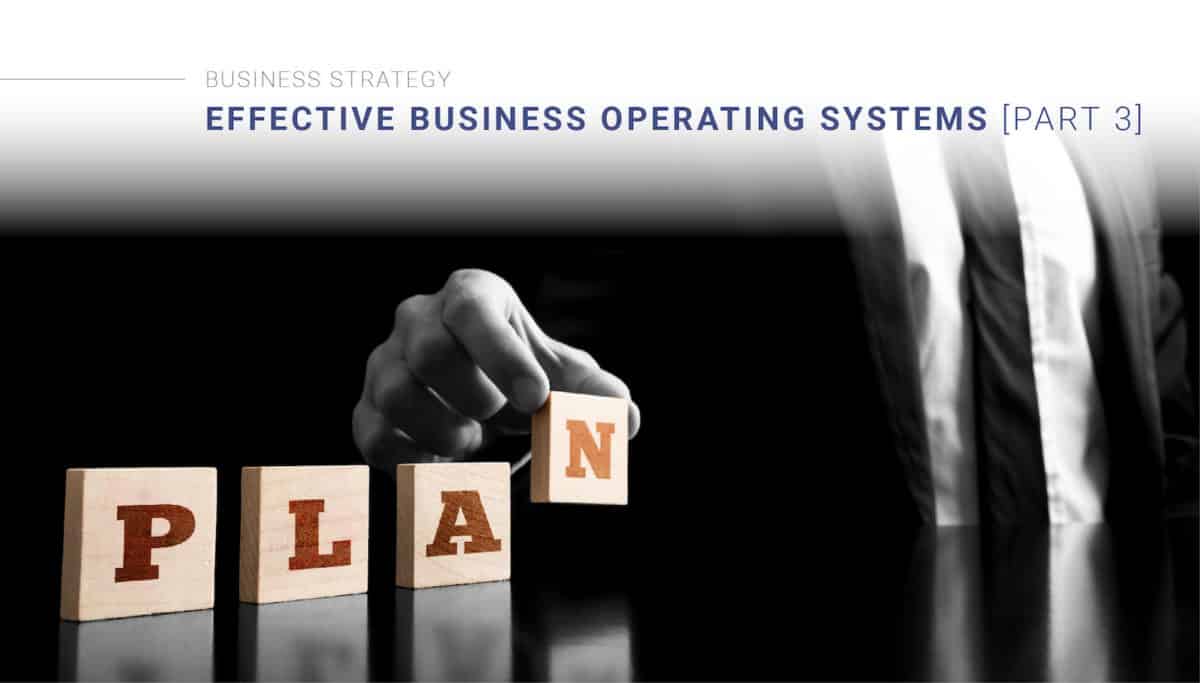Management Pillars & Disciplines
Welcome to module two of my seven-part series on Business Operation Strategy (BOS). This module will give you an overview of what you can expect to gain from this training program. I will introduce you to the five pillars of BOS to develop company planning, valuable management meetings, effective performance monitoring, a compelling people management strategy, and clearly-defined processes.
Each of the five pillars is essential to run and scale a successful business, and we will cover each one in detail in the upcoming modules. Understanding and implementing each pillar in your business will help you more predictably achieve your goals, increase your profits, and grow your company.
The Five Pillars
Let’s start with Pillar One: the right amount of company planning. Planning is critical to the success of any business, and without it, a business can’t achieve its goals. However, too much planning can lead to analysis paralysis, where a business spends too much time planning and not enough time executing.
In this pillar, we will teach you how to strike a balance between planning and execution, and how to create an effective plan that is achievable. You will learn how to set 90-day goals or objectives, ensure there is sufficient clarity of the vision for your business, and develop a strategy to achieve your objectives.
Moving on to Pillar Two: valuable management meetings. Management meetings are crucial to ensure everyone in the company is aligned with the goals and objectives of the business. However, meetings can be a waste of time if they are not productive and efficient.
In this pillar, we will show you how to conduct productive meetings that lead to action and results. You will learn how to prepare for meetings, set agendas, manage time effectively, and follow-up on action items to maximise accountability..
Pillar Three is effective performance monitoring. To run a successful business, you need to monitor your performance continually. Without performance monitoring, you won’t know if you are achieving your goals, and you won’t be able to make informed decisions to improve your business.
In this pillar, we will help you understand how to best set up Key Performance Indicators (KPIs) and how to track and monitor your business’s performance. You will learn how to create, or improve, a dashboard to monitor your KPIs, identify areas that need improvement, and make data-driven decisions to improve your business.
In Pillar Four we focus on a compelling people management strategy. Your people are the most valuable asset in your business, and managing them effectively is crucial to your success. In this pillar, we will show you how to create compelling, yet manageable, people management strategies that attract and retain your most valuable talents.
You will learn how to define or further clarify your company’s core values, create an accountability chart, and conduct effective ongoing check-ins with your team members. You will also learn how to develop a career development plan for your team members and provide regular feedback to help them grow and succeed.
Finally, Pillar Five highlights creating clearly defined processes. Documenting your business processes is vital to ensuring that everyone in your business is on the same page and working efficiently. In this pillar, we will teach you how to document your core business processes, how to identify the most important processes to document, and how to create a process documentation plan for your business.
To reiterate this module, understand that the five pillars of a management framework – planning, people management, processes, weekly execution meetings and performance monitoring – provide not only a simple framework but also a comprehensive business operating system to achieve your business objectives. By adhering to these pillars and disciplines, your business can improve communication, decision-making, accountability, and performance which in turn leads to more predictable long-term success.
Implementing this BOS will ensure that every aspect of your company is working together towards the same clear goals and rowing in the same direction.
Managing Your Pillars
We will now demonstrate how all five pillars of your Business Operating System (BOS) are managed and evolved over time from a single spreadsheet. To stay on top of your business, it is important to access information quickly and in a context that helps you remember why actions were taken and what needs to happen next.
We will walk through the tabs as we work through them in this training series. Let’s begin with the pillar and discipline of planning. We have multiple tabs for company planning because there are a few component parts.
Tab One: Company Declarations
These are the data points that the company declares to be true, and we use the term “declaration” for this information because we want company founders and their teams to stand for something. Whether it is the company vision, mission, or values, it is important that the team draws a line in the sand and declares who they are, where they are going, and at a high level, how they will get there. This often includes a big hairy audacious goal or BHAG, although not all companies use this strategy, Jim Collins pointed out in his book Good to Great that most of the successful companies he researched used BEHAGs to focus and motivate their teams.
But like most things in the BOS process, it is at your discretion for what resonates with your team. Regardless of what specific declarations are used, we consistently find it helpful to have this information readily available during weekly and quarterly meetings.
Tab Two: Enterprise Value & Strategic Planning
This is where we capture and align the financial ambitions of the company with its ability to generate sufficient value to be able to accomplish such monetary numbers. How this gets unpacked varies significantly, but it typically starts with a fluid mind map that makes visible the various strategies and company improvements that need to occur within given time frames.
Tab Three: The 1-Year Plan
From the higher-level strategic planning in the previous tabs, we now come to a more detailed 1-year plan that has both the objectives for the year as well as the next 90-day focus that comes from the most recent quarterly meeting. We consistently refer back to this tab when making decisions in meetings.
Tab Four: Managing Quarterly Rocks or Projects
These are the Objectives or Rocks that were identified in the previous quarterly meeting that need to be completed within this 90-day cycle. Some people refer to them as Objectives, others refer to them as Rocks, while others refer to them as Goals or Projects. Call them what resonates with you, but most importantly, this is the place where we monitor the most important strategic projects that need to be accomplished by the end of the quarter.
Tab Five: Quarterly Meetings
We keep this accessible in case we need to revisit why something was actioned or what the outcome of a conversion was. Depending on your industry, this information, along with what you will see in your weekly meeting tabs, can also support various types of quality assurance audits and documentation.
Tabs Six-Eight: Weekly Meetings
These three tabs demonstrate three different states of weekly meetings – last week’s, current week’s, and upcoming week’s. We will go into the details of weekly meetings in that module.
To summarise, the big takeaway from even this quick overview is that we don’t forget what we said we would do and we consistently monitor and quickly address performance issues as a team.
The bottom line is that the weekly meeting becomes the most important time of the week for all participants.
Tab Nine: Company Scorecard
This is part of the weekly meeting agenda. Each owner of the particular topic is responsible for inputting and calling out their numbers, ensuring the target is achieved week over week. You will hear more about developing and using a company scorecard in the specific monitoring module, but this is where it resides in your Better Operating System.
Tab Ten: Issues Resolution
Next, you will find an Issues Resolution tab. This is used when we come across a problem or opportunity that cannot be effectively solved for within a basic task. Often, multiple steps are required, involving multiple people. We use this tab to manage those more complicated solution strategies.
Tabs 11-14: The Accountability Chart, People Review Form, & Process Documentation
These are additional tabs for the Accountability Chart, People Review Form, and Process documentation. It is sufficient to simply point out where you can find these. They will make more sense when we cover them in the upcoming modules.
That said, you have now seen every core part of the BOS model. Although more insights will come when we get more into specific strategies for each pillar or discipline, most leaders at this point are already feeling like this is something they don’t currently have and will make things easier when trying to stay on top of all the activities and information required to effectively run a growing organisation.
It won’t take long to have your company’s information, strategies, and execution efforts flowing through your personalised BOS spreadsheet. Get excited. Let’s get this embedded into your company’s operations!
Module Support Material
To ensure that this process is firmly embedded, complete this short quiz, referring back to the information above if in doubt:
Engagement Exercise – 5-Question Quiz
Question #1 – What don’t they teach you in business school?
- How to raise capital
- A simple framework to run your entire business
- How to write a business plan
- How to review business case studies
Question #2 – What are the 5 Pillars of a Business Operating System?
- Planning, People, Processes, Meetings, and Monitoring
- Strategy, People, Meetings, Money, Modernization
- Planning, Meetings, Objectives, Team, Values
- Values, Vision, Strategy, Team, Finances
Question #3 – Are the 5 attributes of the BOS framework Pillars or Disciplines?
- Pillars – they are the fundamental parts of an effective business management framework
- Disciplines – they are skill sets that require ongoing attention and development.
- Both, the five attributes provide a clear framework for remembering what needs to be done well and consistently to successfully operate a business.




